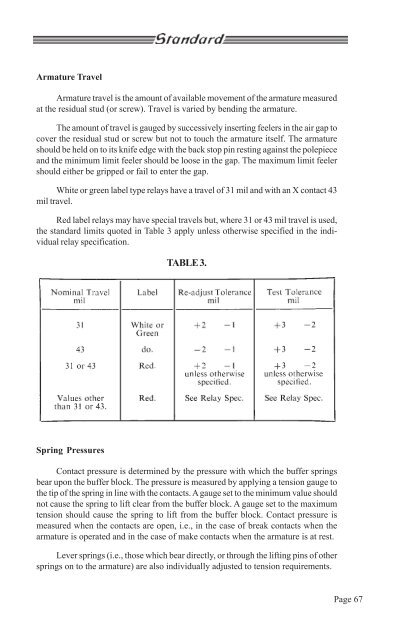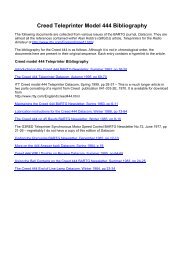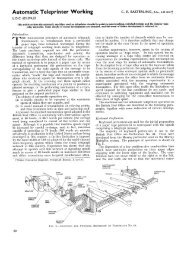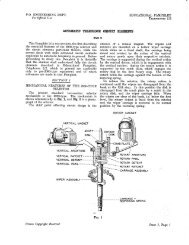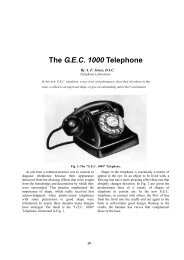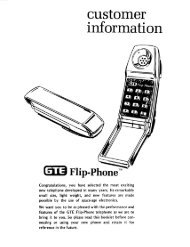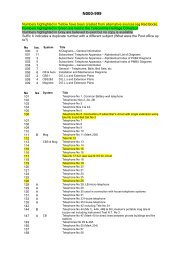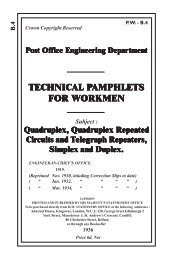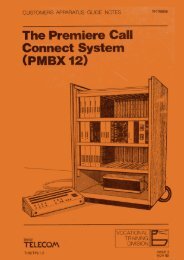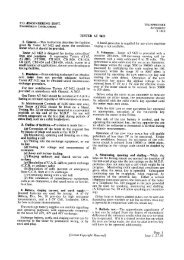TRAFFIC CONTROL TELEPHONE SYSTEMS Circuit - Sam Hallas
TRAFFIC CONTROL TELEPHONE SYSTEMS Circuit - Sam Hallas
TRAFFIC CONTROL TELEPHONE SYSTEMS Circuit - Sam Hallas
You also want an ePaper? Increase the reach of your titles
YUMPU automatically turns print PDFs into web optimized ePapers that Google loves.
Armature Travel<br />
Armature travel is the amount of available movement of the armature measured<br />
at the residual stud (or screw). Travel is varied by bending the armature.<br />
The amount of travel is gauged by successively inserting feelers in the air gap to<br />
cover the residual stud or screw but not to touch the armature itself. The armature<br />
should be held on to its knife edge with the back stop pin resting against the polepiece<br />
and the minimum limit feeler should be loose in the gap. The maximum limit feeler<br />
should either be gripped or fail to enter the gap.<br />
White or green label type relays have a travel of 31 mil and with an X contact 43<br />
mil travel.<br />
Red label relays may have special travels but, where 31 or 43 mil travel is used,<br />
the standard limits quoted in Table 3 apply unless otherwise specified in the individual<br />
relay specification.<br />
Spring Pressures<br />
TABLE 3.<br />
Contact pressure is determined by the pressure with which the buffer springs<br />
bear upon the buffer block. The pressure is measured by applying a tension gauge to<br />
the tip of the spring in line with the contacts. A gauge set to the minimum value should<br />
not cause the spring to lift clear from the buffer block. A gauge set to the maximum<br />
tension should cause the spring to lift from the buffer block. Contact pressure is<br />
measured when the contacts are open, i.e., in the case of break contacts when the<br />
armature is operated and in the case of make contacts when the armature is at rest.<br />
Lever springs (i.e., those which bear directly, or through the lifting pins of other<br />
springs on to the armature) are also individually adjusted to tension requirements.<br />
Page 67


